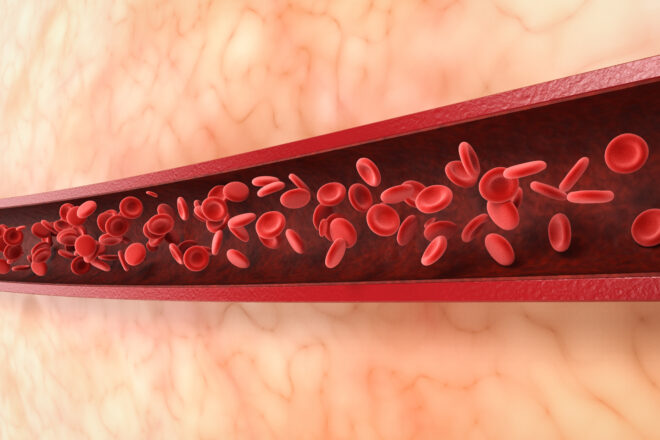
Understanding the mechanisms: How do Haemostat stop bleeding?
Arterial or venous bleeding occurs when we experience an injury on the surface of a body organ. Cuts, abrasions, lacerations, and punctures can also lead to bleeding. When this happens, the body naturally begins a process called hemostasis to begin clotting and stop the bleeding.
Haemostat is a process comprising of several steps that helps stop the loss of blood and start repairing the injury. This is especially essential when the injury is severe, to ensure that not a large amount of blood is lost. A hemostat is a tool or product that is used to aid the process of hemostasis. These can be varied in nature and act in different ways to help in the control of bleeding.
Haemostat process:
The body carries out a series of steps for the control of bleeding. Here’s a brief outline of the process, which we need to know to further understand how hemostats stop bleeding :
- Step 1 : When there is a cut on the skin or puncture in a blood vessel causing bleeding, the process of primary hemostasis begins. The white blood cells, or, platelets, start rushing to the site of the puncture, and forming a sort of plug, called the blood clot. This becomes the first barrier line at the location, helping control not just the bleeding, but also ensuring that germs and debris do not enter the blood vessel.
- Step 2 : Then comes into view the process of secondary hemostasis, wherein substances called coagulation factors start activating in the coagulation sequence, forming a mesh of another substance called fibrin.
The platelet plug and the fibrin together form a stable blood clot which is now strong enough to control bleeding at the site of the injury.
How do Haemostats stop bleeding?
Haemostat are products that can help control bleeding at the site of any injury. These can be of various types, like – Mechanical Haemostat, adhesives, active Haemostat, sealants, and dressings. Let us dive briefly in to how each of these can help stop bleeding.
- Mechanical Haemostat – These are products made up of substances like chitosan, alignates, gelatin, collagen, cellulose, and polysaccharide derivatives that aid the process of clot formation by causing swelling and setting up a mechanical barrier at the site of injury. Some of these hemostats may have active biological compounds that support the clotting process.
- Active Haemostat – These are products that contain the substance called thrombin5, which helps in the process of formation of fibrin in the process of blood clotting. These are usually from bovine or human origin, or simply recombinant.
- Sealants – These Haemostat are made up of materials like7, fibrin, thrombin, Polyethylene Glycol Polymers (PEG), albumin, glutaraldehyde, cyanoacrylate, etc., which aid the process of formation of fibrin from fibrinogen. Sealants create a sealing barrier that prevents the leakage of blood. These are effective on a dry surface.
The kind of Haemostatic product to be used to control bleeding depends on the discretion of the physician.
However, easy-to-use Haemostatic dressings must always be kept handy, especially in emergency or first-aid kits to prevent excessive bleeding due to injuries.
Axiostat is a chitosan-based biopolymer Haemostatic dressing that works on the principle of Charge based Protonated Bioadhesive Technology (PBT®). It is sterile and safe-to-use product that can be used on all sorts of cuts and bleeds and even on deep wounds.
The Axiostat chitosan haemostasis mechanism includes four steps:
Step 1: Charge based adhesion between the blood components and Axiostat.
In this step, due to the presence of negative charge on the blood components, the RBCs, platelets and fibrinogen get captured within the positively charged Axiostat.
Step 2: Platelet activation via Toll-like Receptors (TLR).
Axiostat stimulates the TLR, which, in turn, aid in the activation of the platelets for the steps leading to initiation of the activation of the blood clotting cascade.
Step 3: Clotting cascade activation.
Factor Xa is the key factor in the blood clotting cascade where the intrinsic and extrinsic pathway join together.
Axiostat enhances the expression of Factor Xa (FXa) activity which leads to thrombin generation.
Step 4: Fibrin microthrombi (plug) formation at the bleeding site.
In this step, thrombin leads to formation of fibrin to create a network that captures blood components and forms a robust seal at the bleeding site to achieve haemostasis.
Axiostat is easy-to-apply and can also be easily removed by irrigating with salt-water. To know more, visit us at – www.axiobio.com
References :
- https://my.clevelandclinic.org/health/symptoms/21999-hemostasis
- Physiology, Hemostasis – StatPearls – NCBI Bookshelf (nih.gov)
- https://www.news-medical.net/health/What-is-Fibrinolysis.aspx
- Advances in the development of hemostatic biomaterials for medical application – PMC (nih.gov)
- Comparison of hemostatic agents used in vascular surgery – PMC (nih.gov)
- Hemostatic materials in wound care – PMC (nih.gov)
https://www.sciencedirect.com/science/article/abs/pii/S0001209214007169 - https://pubmed.ncbi.nlm.nih.gov/38252814/
- Efficacy and Safety of Axiostat® Hemostatic Dressing in Aiding Manual Compression Closure of the Femoral Arterial Access Site in Patients Undergoing Endovascular Treatments: A Preliminary Clinical Experience in Two Centers (axiobio.com)
 A collaborative study with Harvard Medical School
A collaborative study with Harvard Medical School

